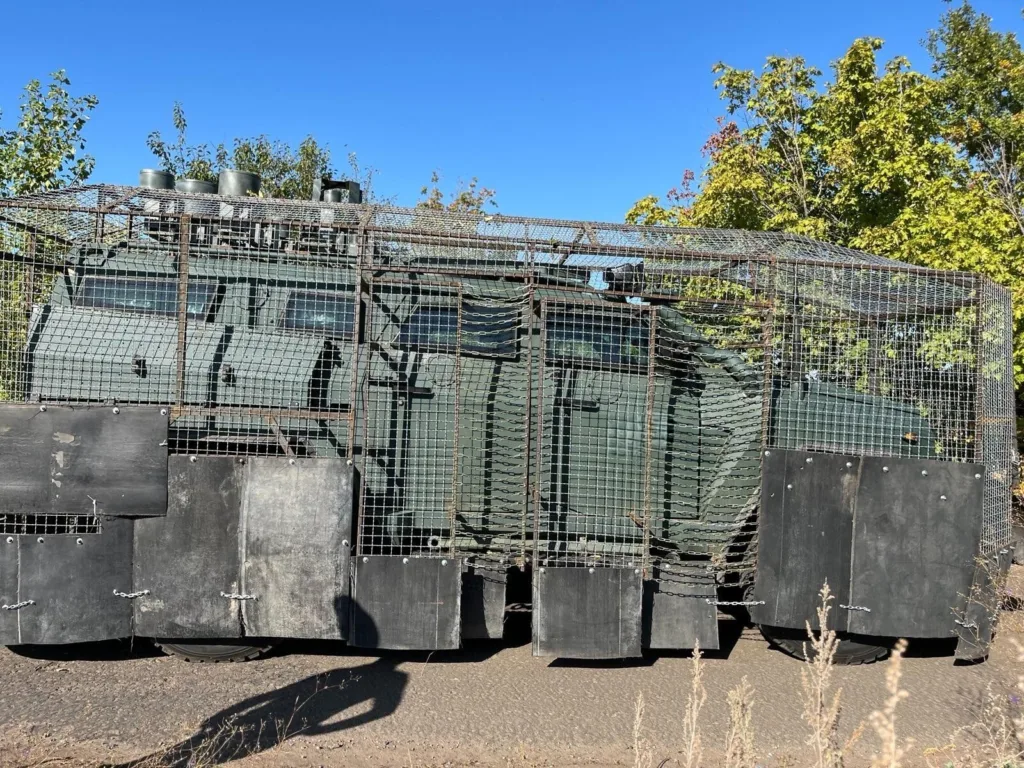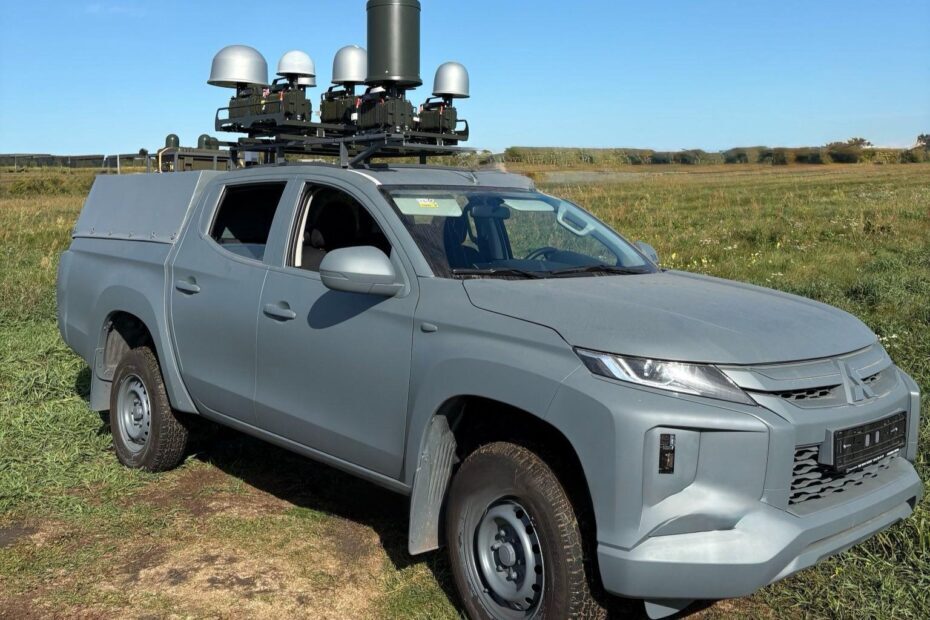- Dette innlegget er også tilgjengelig på norsk.
Fritt Ukraina has recently delivered electronic drone-protection equipment to Ukrainian forces with a total value exceeding NOK 11 million (1,1 Mill. USD).
The equipment is mounted on vehicles and used to detect incoming drones and then disrupt their signals. In this way, it helps protect both soldiers and vehicles from attacks.
The threat from Russian FPV and Mavic drones is growing rapidly. With grey zones stretching up to 40 kilometres from the front line, there are now large areas—both along the lines and in nearby cities, where it is life-threatening for soldiers and civilians to remain.
This is why countermeasures are absolutely essential. They protect Ukraine’s most important resource: the soldiers carrying out the missions.
“Every life saved is critical for Ukraine’s fight for freedom. It underscores the fundamental difference between a value system that puts human life at the centre, and an adversary that shows a consistent lack of respect for life,” says Natalia Golis, director of Fritt Ukraina.
A standard package for one vehicle costs around NOK 100,000 (10 000 USD). This donation is partly funded by the law firm Sands and the energy company Eviny in Bergen, and it is equipment that saves Ukrainian soldiers’ lives every day.
So far, Fritt Ukraina has delivered electronic drone protection worth more than NOK 11 million.

What is electronic warfare?
Electronic warfare involves using radio signals, radar, and other electronic tools in military operations. The goal is to gain situational awareness of what the enemy is doing and to protect your own forces by disrupting or disabling the enemy’s equipment.
This includes everything from listening and monitoring to blocking or destroying sensors, communication systems, and drones. In addition to conventional jamming, it also includes measures targeting positioning and navigation systems, primarily GPS. Two key methods here are GPS jamming and GPS spoofing:

• GPS jamming:
This involves emitting noise or disruptive signals on the frequencies used by GPS receivers. The result is degraded or lost positioning, causing uncertainty and weakened navigation.
• GPS spoofing:
Here, false but credible GPS signals are generated to “trick” a GPS receiver into believing it is somewhere else, or that the time is incorrect. Spoofing can cause a vehicle, drone, or navigation system to fly or drive in the wrong direction, and is one of the most commonly used EW measures. In some situations, spoofing has reduced HIMARS accuracy from about 70% to near 10%.
GPS jamming and spoofing are among the most widely used EW measures, and some reports claim that such measures have significantly reduced the accuracy of precision weapons (such as HIMARS), with some sources estimating accuracy as low as 10 % in certain scenarios. These numbers vary widely and should be interpreted cautiously, but the point stands: control over the radio spectrum and navigation signals can have major military consequences.
Detects and stops enemy drones
The system first detects drones in the air, especially FPV drones frequently used by Russian forces. FPV stands for first-person view and means the drone sends video and control signals directly to the operator in real time.
When the system detects a drone, it activates jamming, technology designed to break the connection between the drone and its operator or disrupts the drone’s navigation.
Without contact between the drone and the operator, the drone will crash or become useless. With GPS jamming, its position becomes less accurate. With GPS spoofing, the drone may believe it is somewhere else entirely.
Since both drones and jamming systems are developing at enormous speed, the equipment must be updated regularly. Even so, the lifespan is limited, and the need for new systems is substantial.
Saving lives every day
The equipment delivered consists of tactical protection systems for vehicles and personnel. These are small jamming units that protect against threats such as drones and GPS interference within a limited zone around the vehicle or patrol.
Fritt Ukraina has so far delivered such jamming systems to Ukrainian-produced armoured vehicles of the Merek Novator type, as well as to more than 70 pickup trucks used in field operations. The deliveries were carried out during autumn 2025.
All equipment is produced in Ukraine by two different suppliers, allowing for rapid modification and expansion of frequency ranges, as well as fast repairs and integration with detectors that Fritt Ukraina also donates.
The organisation delivers only equipment requested by the specific units. This delivery went to a Ukrainian UAV unit, a department operating unmanned aerial vehicles for surveillance, reconnaissance, target acquisition and, in some cases, strikes, using everything from handheld quadcopters to larger tactical drones.
“This equipment saves lives every day. We only deliver what the units request, and we update the deliveries as needed since the technology develops rapidly,” says Natalia Golis.
In addition to tactical systems like these, there are large strategic EW platforms such as the Krasukha. These systems have far greater impact, range and energy requirements, and are used for area denial, disruption of radars, satellite communications and aircraft, often over tens of kilometres.

EW combined with traditional weapons
The soldiers using this equipment often operate simultaneously with traditional weapons. Many modern attack drones now use fibre-optic cables for video and control.
These cannot be jammed, and when such drones come close, soldiers must rely on more traditional means, such as shotguns, to shoot them down.
Several vehicles are also equipped with physical drone protection in the form of an outer cage.
This provides some protection against small drones and anti-armour munitions by causing the charge to detonate when it hits the mesh, before reaching the vehicle itself.
The result is that the explosion occurs outside the vehicle, meaning the blast and fragments penetrate the armour to a far lesser extent.
